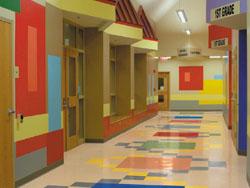Top 250 Design Survey 2008 - October 2008
By Darius Helm
While 2008 has been another growth year in the commercial market, this year’s survey of top designers seems to indicate a more cautious and thoughtful approach and a more conservative aesthetic, from subtler color palettes to a wiser use of materials—to getting more bang for the buck. At the same time, designers are more focused than ever on the greening of the built environment.
While styling ranks among top concerns this year, so do issues involving pricing. And over the last couple of years, there’s been evidence of a growing frustration among designers regarding information clarity, in the specification process in general and in the environmental arena specifically. There’s a sense that flooring producers and their reps have embraced a strategy of making the information that designers need particularly difficult to decipher—and that includes pricing.
Presumably, the strategy is designed to make apples to apples comparisons that much more difficult, and the end result is that designers have to dig that much deeper to root out the information they need to specify their projects. Designers feel particularly frustrated when it comes to specifying green, an area where obfuscation has reached dizzying heights, but where designers are looking for partners, not adversaries. There’s a clear sense that the flooring manufacturers that make it their business to provide clarity and transparency and embrace standardized systems will be rewarded by greater trust and loyalty from the design community.
There are signs that the corporate market is losing ground to other commercial sectors this year. For the first time in the design survey’s history, the education market accounted for the majority of top projects among survey respondents. Compared to last year, top jobs in higher education have doubled and K-12 has gone up 120%.
The corporate market was only down a hair, largely among Fortune 500 companies, many of which have been taking a beating. This is particularly true of the financial sector.
Healthcare, which over the last few years has grown to account for about a quarter of top projects, remains largely unchanged and will undoubtedly continue to post high growth for the next decade or so, as baby boomers, armed with a new set of needs and demands, enter retirement and have to deal with both acute care and retirement communities. Evidence based design is also playing a huge role in the redesign of acute care facilities.
For complete survey results, see the October 2008 issue of Floor Focus Magazine.
Copyright 2008 Floor Focus
